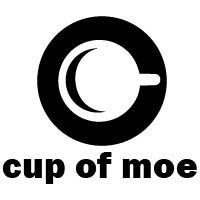We may earn money or products from the companies mentioned in this post.
 Dr. Constance Petersen (Ingrid Bergman) is a new psychoanalyst at Green Manors sanatorium, and current hospital director Dr. Murchison (Leo G. Carroll) is on the verge of retirement. Dr. Anthony Edwardes (Gregory Peck) is named his successor. Edwardes begins to display odd symptoms, and eventually Petersen discovers that this isn’t the real Dr. Edwardes. Faux-Edwardes admits he isn’t the good doctor, but can’t remember his true identity. Together, Dr. Petersen and the masquerading Dr. Edwardes embark on a mission to discover what happened to the doctor, and unlock the imposter’s lost memories.“Spellbound” is one of Hitchcock’s more unique films, and the suspense is really ramped up. There’s the tension of Dr. Edwardes’ disappearance, and his impersonator. It’s unclear if he’s a friend or foe, and the film plays on that notion well. However the most unconventional aspects are the surrealist dream sequences concocted by Salvador Dali for the movie. They’re bizarre, even for a Hitchcock production, and could arguably be the inspiration behind that weird boat scene in “Willy Wonka and the Chocolate Factory.”
Dr. Constance Petersen (Ingrid Bergman) is a new psychoanalyst at Green Manors sanatorium, and current hospital director Dr. Murchison (Leo G. Carroll) is on the verge of retirement. Dr. Anthony Edwardes (Gregory Peck) is named his successor. Edwardes begins to display odd symptoms, and eventually Petersen discovers that this isn’t the real Dr. Edwardes. Faux-Edwardes admits he isn’t the good doctor, but can’t remember his true identity. Together, Dr. Petersen and the masquerading Dr. Edwardes embark on a mission to discover what happened to the doctor, and unlock the imposter’s lost memories.“Spellbound” is one of Hitchcock’s more unique films, and the suspense is really ramped up. There’s the tension of Dr. Edwardes’ disappearance, and his impersonator. It’s unclear if he’s a friend or foe, and the film plays on that notion well. However the most unconventional aspects are the surrealist dream sequences concocted by Salvador Dali for the movie. They’re bizarre, even for a Hitchcock production, and could arguably be the inspiration behind that weird boat scene in “Willy Wonka and the Chocolate Factory.”
The storytelling unravels slowly, but in such a manner that it captures attention rather than fostering disinterest. It’s as if there’s a trail of nuggets offering tidbits of information, releasing incremental progress. This timed-release structure makes “Spellbound” riveting, but the most nightmarish aspects are those dream sequences. Seriously unsettling, they are a large part of why it’s one of Hitchock’s more underrated, gripping productions. However, if “Spellbound’s” surrealist hallucinations and psychological tension don’t solidify its Halloween appropriateness, the release date certainly does: October 31st, 1945.
This post may contain affiliate links. We are a participant in affiliate programs such as the Amazon Services LLC Associates Program, an affiliate advertising program designed to provide a means for us to earn fees by linking to Amazon.com and affiliated sites. However, all products are thoroughly tested and reviews are honest and unbiased.

